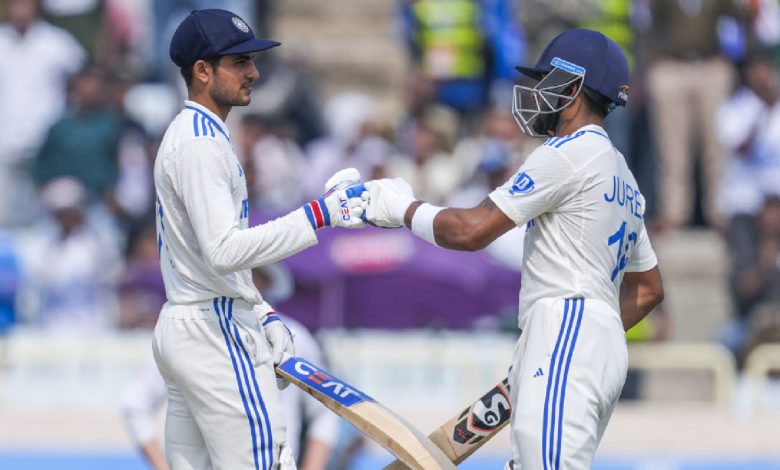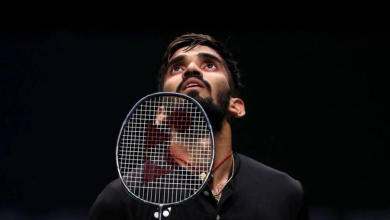New chasemasters: Why Shubman Gill and Dhruv Jurel are a throwback to MS Dhoni-Yuvraj Singh | Cricket News

Only 32 times in 158 instances have India completed a successful chases in their Test hory. Chennai 1999, Pune 2017, Chennai 2021, Bangalore 2004, 2005, 1987, or most recently Hyderabad 2024; there have been many instances of India failing to handle the fourth-inning pressure at home.On Monday, on a flaking pitch where the ball turned and occasionally kept low, India was struggling. Chasing 192, they were 120/5. Ranchi 2024 seemed like a repeat of the same old story.
However, in Shubman Gill and Dhruv Jurel India would discover a pair of potential chase-masters. Gill likes fourth innings — in 10 knocks, he averages 44. To contextualise, Rohit Sharma averages only 32 and has scored a half-century fewer than Gill, having featured in eight more innings. Steve Smith, arguably the best batsman of his generation, averages 29. It shows how devious a pursuit it is.
Gill did post a foundation-laying 91 in a horic Brisbane chase. But this was a sterner challenge. At the Gabba, he was en route to stardom, but not a star yet. Thus, less baggage. For much of that innings, he had the stability of Cheteshwar Pujara at the other end. Here, he was playing the senior hand.
The chemry, but not particularly their methods, whipped up memories of Yuvraj Singh and MS Dhoni when India had just begun to crack the chase code in ODIs. Yuvraj was insouciant, unflustered to a fault, as Jurel was. Dhoni was the puzzle-solver, bending his methods to suit the situation.
Gill, like Dhoni, often would just meander along with singles and twos. He controlled his instinct to go for the big hit. Dhoni, in his finisher avatar, struck sixes and fours only if those were necessary. Unlike his dasher role at the start of the career. “This would probably go down as my only innings where I didn’t hit a boundary, like a four, after scoring a fifty,” Gill said after the match. “But you have to see the situation and have to play the situation sometimes,” he added.
Play the situation. That’s what the best finishers, across formats, do. Jurel too played the situation. He was fresh from his 90 in the first innings, but this was different. He could have counter-attacked. But he resed and just knuckled down, soaking the pressure and manipulating the gaps for singles, a busy rather than a bustling player. Jurel nudged and nurdled, with pliant wrs; Gill often came down the track and extended his defensive push for a single. They barely got together in the middle; hardly advised each other.
They inhabited their own spaces and didn’t infringe into the other. They mostly exchanged glances. Glares of assurance, nods of guarantee. Like Dhoni and Yuvraj would. Perhaps, one of them, likely to be Jurel, would have hummed a song too.
The mechanics, undoubtedly, differ with formats. But both contain challenges and hazards of their own. The scoreboard pressure remains, but in different ways. A batsman doesn’t, often, have the pressure of overhauling a total in half as many balls. He could often play out one bowler and target another. There would be restrictions on setting fields too. But pitches in Test matches, on the fourth and fifth days especially, would be far more treacherous than their T20 or ODI counterparts would ever be. In Asia, there would be variable bounce, excessive turn.
Shubman Gill and Dhruv Jurel after India won the fourth Test match against England, in Ranchi on Monday. (PTI)
One has to possess the skill and mind to play the situation. India’s batsmen were seldom short-fused for skills, but in the relentless heat of the situation, they often lost their heads. The Chennai 1999 meltdown is a classic case study. Soon after Sachin Tendulkar departed, clutching his tattered back, India lost three wickets for four runs. Twelve years further back, India were 155 for 5, chasing 221 before folding up 16 short against the same opposition. In recent times, three of their last four losses at home have come when batting last. There have been several near-escapes too. Like Mohali 2010.
Ranchi 2024 was unlike Mohali 2010, despite the mini-collapse. Perhaps it was a sign of India overcoming another horic burden. At some point in time, Virat Kohli, who averages 47 in the fourth innings, would arrive to add another layer of solidity to the line-up.
India’s 4th innings fiascos: Even Virat, Sachin have faltered
India vs England, Hyderabad 2024
The target of 231 was stiff but not unconquerable. At one point, India were cruising at 63 for 2, before stuttering to 119 for 7, against the wiles of debutant left-arm spinner Tom Hartley. Despite some lower-order resance, India fell 28 runs short.
India vs England, Edgbaston 2018
India were chasing 194 and seemed on course until Virat Kohli perished, 53 runs short of the target. India added just 22 more runs and were left to rue a missed opportunity. The destroyer was Ben Stokes, with a four-wicket haul.
India vs Sri Lanka, Galle, 2015
Set a target of 176 on a raging turner, India seldom got going and folded up for a meagre 112. India’s lone source of resance was Ajinkya Rahane’s 36. But that was not enough to douse the slow-fire of Rangana Herath.
India vs Pakan, Bangalore 2005
The hosts were always looking to draw the match. The target of 383 was too tall an order. Openers Gautam Gambhir and Virender Sehwag put on 87, but the rest combusted. In the space of 48 runs, they lost five wickets, from where they never recovered.
India vs Pakan, Chennai 1998
The most heartbreaking of them all. Sachin Tendulkar scored one of his greatest hundreds, battling back pain, Saqlain Mushtaq, Wasim Akram and Waqar Younis, but departed with the target only 17 runs away. The rest is painful hory.







